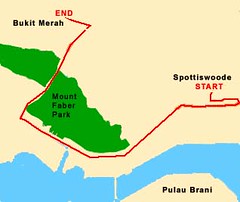10.5km MacRitchie Loop
Thursday, March 31, 2005I tell ya, adrenaline is the best way to keep from being tired. I carried my hp just in case, but at the point where we thought that we might have made a wrong turn and there was nobody in sight and it was already 710pm, my hp made a beep and it said, “No network." Boy did we run. We did it in 67mins, which was faster than what we did in Australia.
AND I get home and what does my dad tell me over my mee goreng dinner? That when he was a young man, his friend from the church youth group went jogging at MacRitchie and they couldn’t find his body for 7 days. In the end they found him in the water crouched in the fetal position. He was only 16, ended up getting 7As, but wasn’t alive to get his results. Sheesh. No wonder I couldn’t sleep last night.


